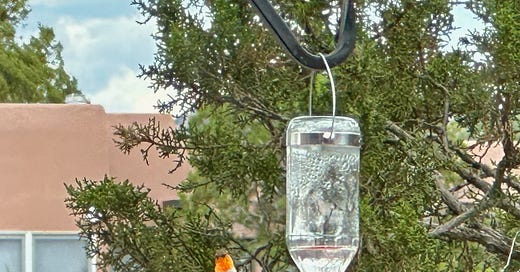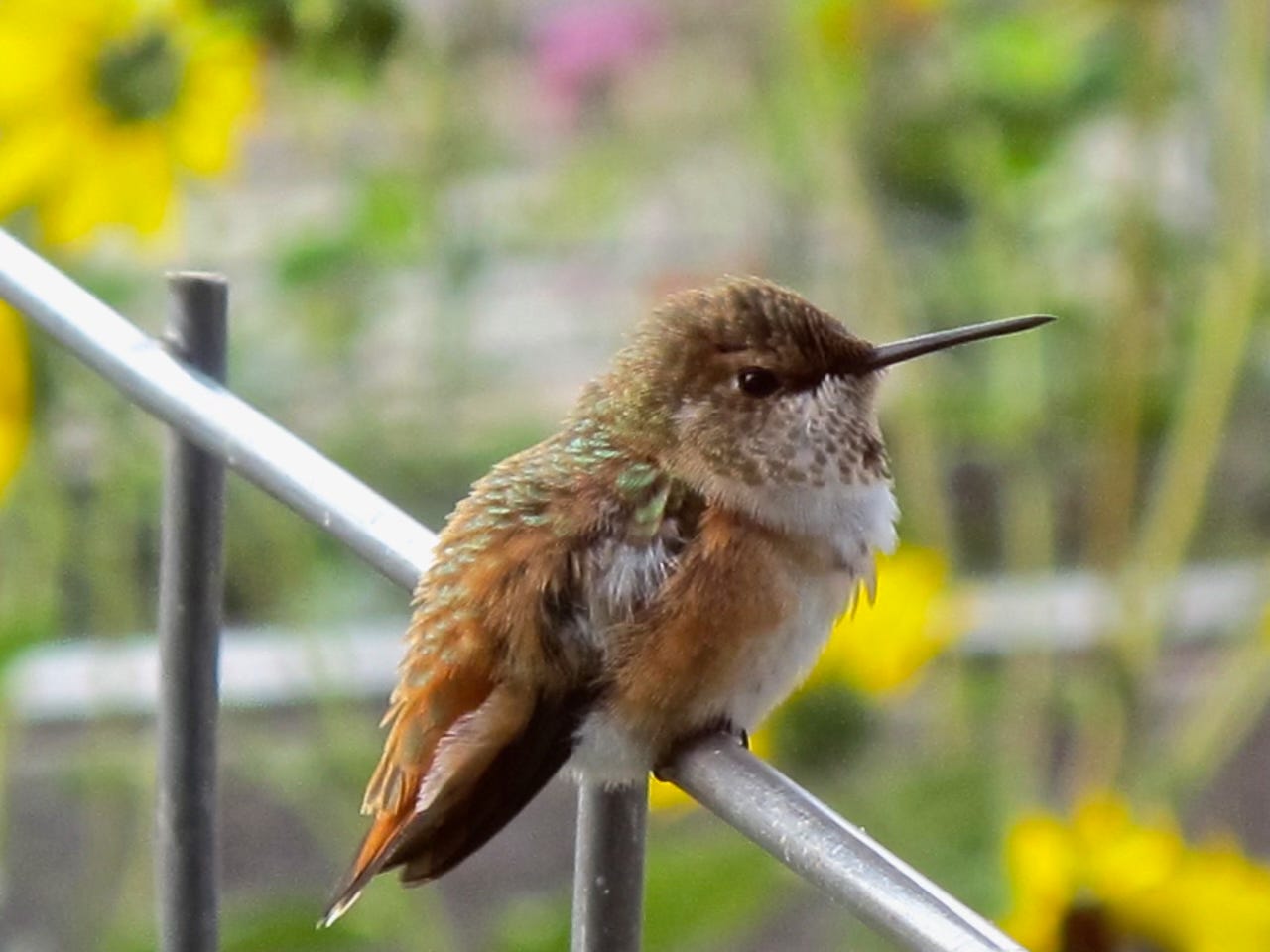aren’t I handsome? rufous hummingbird poses southbound
Hello, Friends! As I finish the seventh month of this Year of Spiritual Thinking project, I realize that what sustains me in times as tumultuous as these is something I can only call hope. Not the passive kind of hope that wishes things were different or better, an active faith that impels me to work in my own way toward positive change.
Beginning in my everyday life with my everyday actions. Practicing terraphilia: Living with love and lovingkindness toward each other and this planet. Every day, with everyone.
Hope might be our greatest evolutionary adaptation — the mitochondria of our spiritual metabolism, the opposable thumb of our grip on life.
—Maria Popova, The Marginalian
This kind of hope, the Czech playwright turned president Václav Havel wrote, is “an ability to work for something because it is good, not just because it stands a chance to succeed.”
Not because we believe the thing we work towards might succeed, but simply because it is good. That ability to believe in doing what is right even when the odds are long is active hope. It is what creates change.
Migration as active hope
Migration exemplifies hope as an active verb: Migratory creatures fly, swim or walk hundreds or thousands of miles from a place their genes remember as fruitful in one season to a place that has provided abundance in another. There is no certainty to this kind of journey, only a movement impelled by hope: They can’t know what they will find along the way or whether the conditions at either end of the journey will have changed.
Take the male rufous hummingbird in the photo above: He winged up the Pacific Coast of North America from central Mexico this past spring, a journey of perhaps a thousand miles, fueling his hovering flight with flower nectar and hummingbird feeders along the way.
His aim: The mountain meadows of the Pacific Northwest, which his genes predict would be so dense with flowers and so nectar-rich that he would be able to mate with many females. Now, his mission of perpetuating the species complete, he flies south along the Rocky Mountains, back to central Mexico for the winter where he will find what he needs to recoup his energy for next year’s migration. (Hummingbird moms stay behind to build the nest and raise the kids.)
Rufous hummingbirds aren’t impelled to expend the enormous amount of energy required to fly from hemisphere to hemisphere because they’re guaranteed success. Not at all. They launch themselves into the air because the experiences encoded in their genes tell them migration is their best chance. So off they go, thumb-size birds weighing less than a nickel, beating their hovering wings dozens of times a second over thousands of miles.
That is hope in motion, like the sage-grouse moms who walk with their downy chicks for tens of miles from nests in the low-country sagebrush where they were born near the leks where the males dance and boom to attract mates. Sage-grouse hens herd their broods into motion before the chicks can fly in order to reach mountain sagebrush habitat while bugs are still abundant, food the kids need to grow up strong and whole.
Hope in motion, like the human migrants trekking from South America to North America, slogging through the jungle of the Darien Gap in Panama, riding the dangerous freight trains north. Or crowding into small boats to cross the Mediterranean Sea, or paying smugglers to stuff them in carts and car trunks to escape the death-camp of Gaza.
We look upon the migration of other species with awe. We hang out hummingbird feeders and take delight in seeing those tiny migrants. We pay thousands of dollars to witness wildebeest migrations in Africa, or caribou in the Arctic. It is not hard to see those journeys as heroic, as acts of hope for whole species.
Yet we fear or turn away from human migrations, perhaps because they are so often borne of desperation and we are ashamed to be part of a species that wreaks such carnage on each other.

Hope Takes Courage
To act from hope takes courage—strength from the heart, the word stemming from the Old French “coeur” for heart. The courage to launch on a journey of tens or thousands of miles.
The courage to simply change course or change your mind. The courage to listen to someone different from you, to learn something new and perhaps scary. The courage to believe in the power of hope in action.
Hope is an active verb, one that demands we do something, not just wish for something. Be the change we want to see. Hope rouses us from the stupor of feeling like nothing we do matters, and prods us to do something positive, just because we can’t not.
Because any positive thing we do, no matter how small it may seem at the moment, adds to the ocean of light and love in this world, helping it overcome the ocean of darkness and fear.
Hope, writes Rebecca Solnit, in Hope in the Dark: Untold Histories, Wild Possibilities, “is not a substitute for action, only a basis for it.” She goes on to say,
Hope is a gift you don’t have to surrender, a power you don’t have to throw away.
Hope is a way to live. The power to make the world a kinder and more loving place. That is hope worth nurturing and practicing—every day with everyone we meet, human and moreso.
May you hope. With courage and love for this Earth and we who share the planet. All of us, everyday.
Blessings! Susan






I love this. It made me think of that Emily Dickinson poem, "'Hope' Is the Thing With Feathers."
Love the idea of migration as hope in action. Thinking of the Monarchs, too.